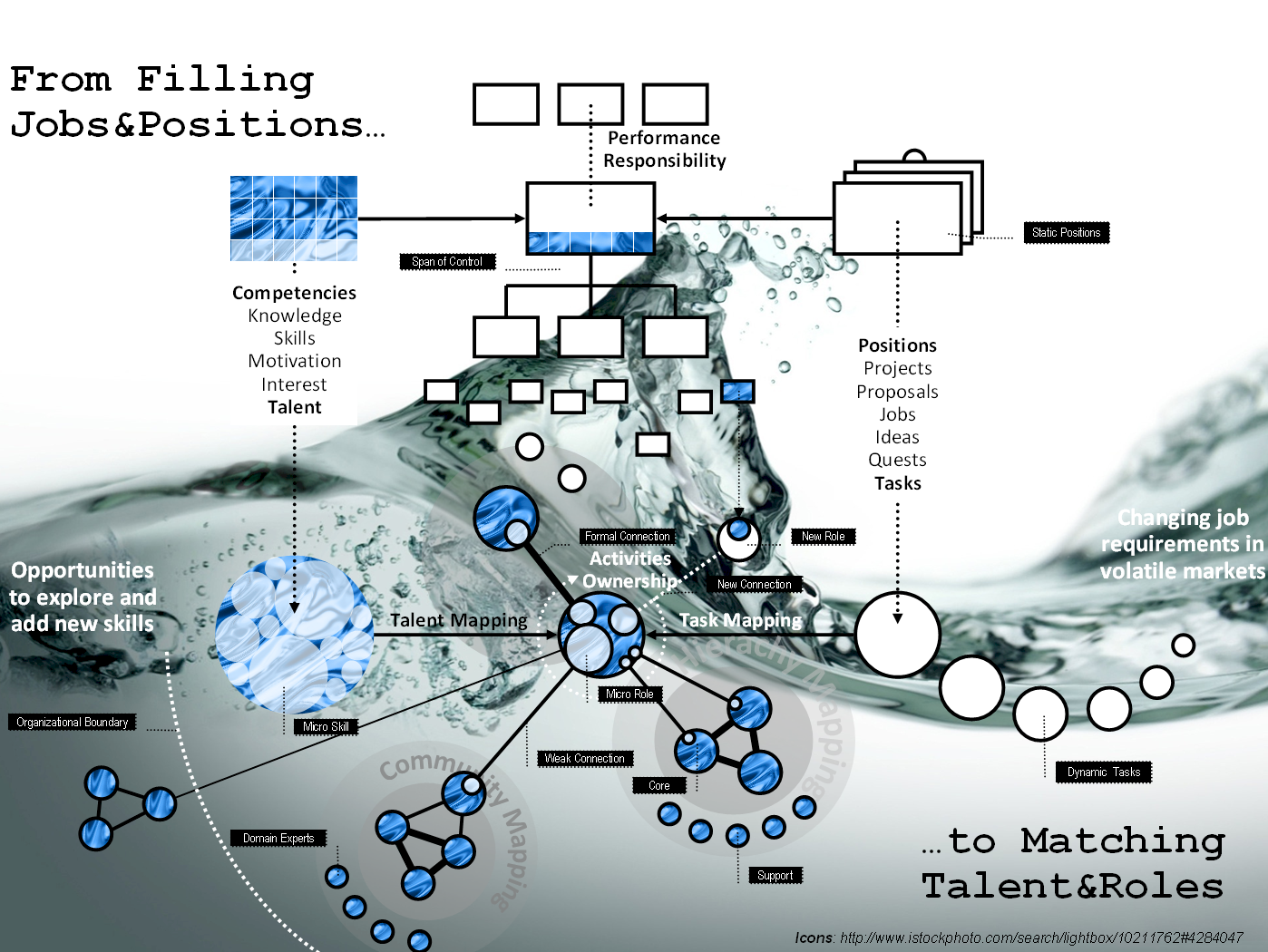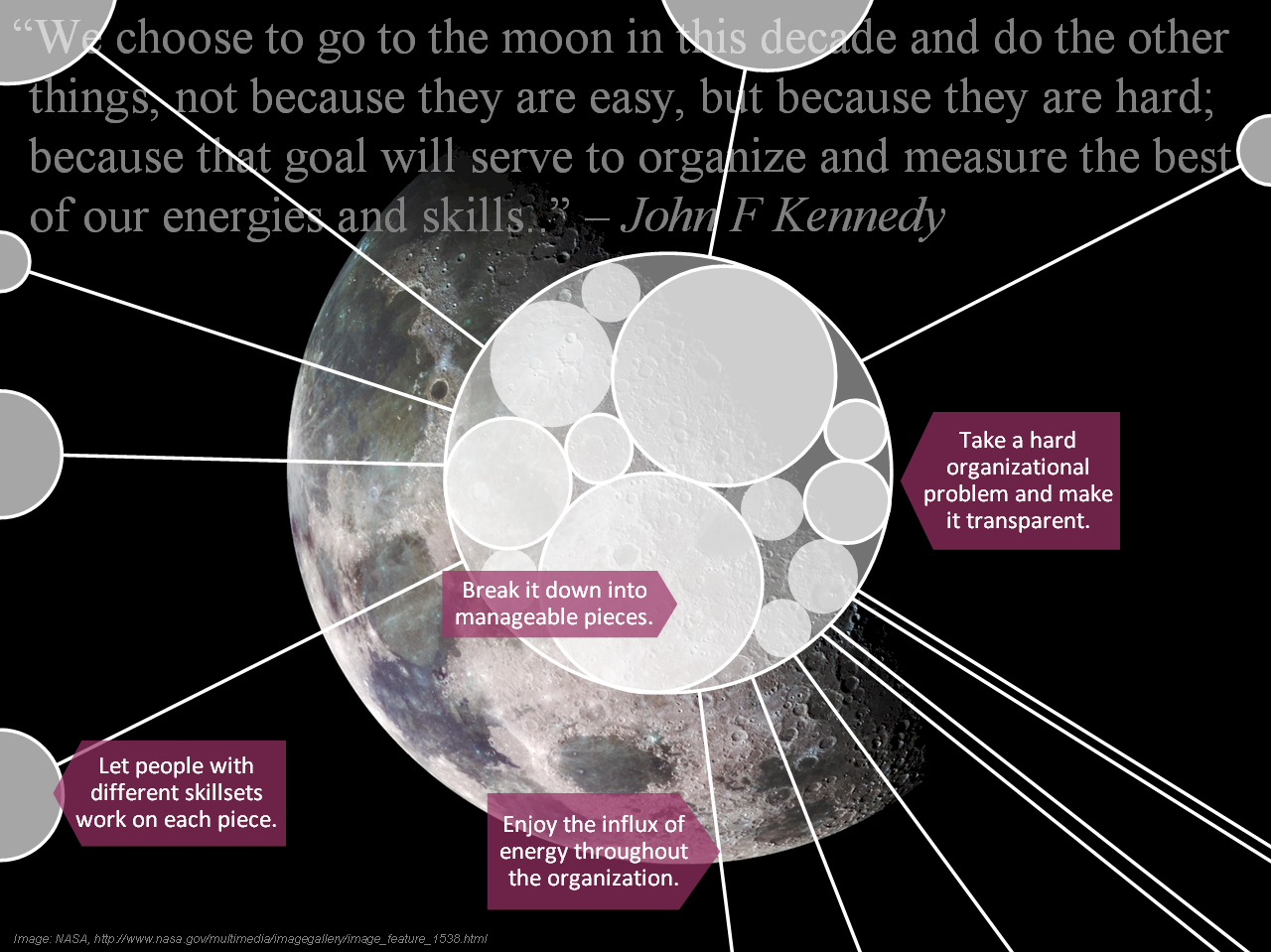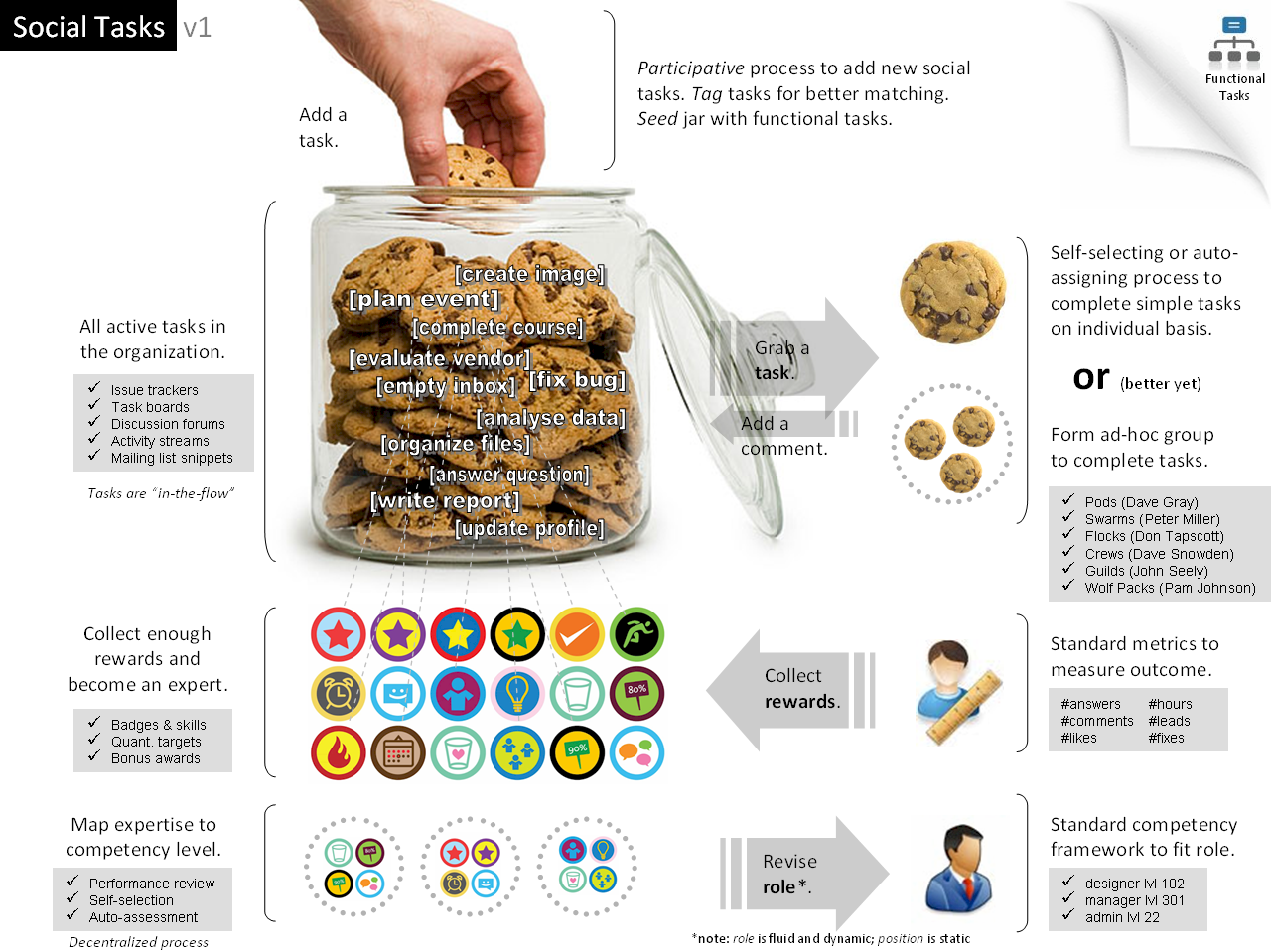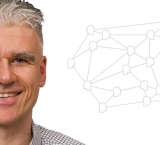Hack:
From Filling Positions…to Matching Talents
Let's take a bold step forward and set our talents free within our increasingly connected organizations. Let’s move beyond the outdated HR model of filling positions based on hierarchical competency frameworks to matching our talents with skill-based micro-roles and crowd-sourced micro-tasks. What are we waiting for?
A core HR process is the creation of a position or job, usually triggered by an urgent business situation (someone left the company, new roles need to be created existing roles need to be re-assigned, split or merged). The outcome of this process is a description of a job role, job functions and the reporting relationships. These positions are usually defined with clear boundaries in mind and, once created, become a static part of the organization chart.
To successfully fill a new or existing position, certain selection criteria have to be established that are drawn from a catalog of skills, experience, qualifications, and knowledge. This catalog is commonly referred to as an HR competency framework. Many companies create and maintain their own competency frameworks, which, over time tend to become very complex and unwieldy - one of the reasons, HR consulting firms routinely advise on and customize large catalogs for organizations. There are pre-defined competencies (grids) for every conceivable position, such as for administrative roles, for managerial and supervisory roles, or competencies for leadership roles.
With this framework at hand, the HR organization sets out to match the expected competencies with potentially successful candidates in the job market. Frameworks are also the basis to determine the correct remuneration levels for a position. In other words, the aim of this HR process is to quickly and efficiently marry candidates to a particular position while keeping the compensation in line. If this sounds more like an arranged marriage, you are beginning to see the problems with this approach.
Competency frameworks represent an outdated model, one that is based on standard jobs that fit into cookie-cutter positions. Typical enterprises have typical jobs that need to fill typical positions. This approach worked very well for the last century (since Taylor sought to improve industrial efficiency) and survived well until today - even “modern” positions (e.g. social media) follow the same model. Positions are firmly cemented into the hierarchy and once filled, candidates have little or no opportunity (don’t talk about incentive) to connect to and share work with other positions. Even teamwork that aims to reach out to other people across the organization still operates within a confined role (e.g. teams are assembled on a fixed schedule and members are assigned on a billable rate level).
It is not surprising then that hierarchical performance management processes fit extremely well into this model. Individual outcomes can be easily measured against standardized performance levels that are linked to standardized competencies for the job. But the world is not standing still. Markets are increasingly volatile and job requirements are changing rapidly. Skillsets that have been valuable a few years ago, become obsolete and are replaced with new skillsets. Competency frameworks are difficult to change and cannot keep up with these new demands. Even the education system is trailing behind and tries to “outfit” students with anticipated competencies that companies are looking for in their hiring practices. This is the modus operandi in organizations today. There has been little or no change and positions are still “filled” based on this outmoded HR model. Let’s take a step back and see how we can begin to transform this situation.
Imagine an organization where employees join with a fresh set of skills that can be readily applied anywhere in the organization. You have some design skills? People leadership skills? Technical programming skills? Business intelligence skills? Or how about those gamification skills you just acquired in a free online course? What if any those skills can be put to use in an organization? What if there’s a way to tap into your true interests and talents, to find a way to truly motivate you to contribute to the organization as a whole - outside of your prescribed box that is your position and your prescribed path that is your career.
As a first step, we’d have to recognize and acknowledge that people come with a multitude of skills, experience, qualifications, and knowledge that, for the most part, fall outside of the position description. Let’s call these skills micro-skills. Some of them will fit the position, but others, if not most, will not. There is much hidden talent that simply cannot be revealed and put to use within the confines of the position in the hierarchy [1].
Next, let’s assume that the counterpart to a micro-skill is a micro-task. Micro-tasks can be created anywhere in an organization, can come in any shapes or sizes and can be dynamically matched to micro-skills (not unlike a matching service for people to find each other). A micro-task can be to plan an event, to complete a course, to evaluate a vendor, to analyse a data set, to organize some files, to answer a question, to write a report or even to empty your inbox (a personal task, fairly big to most of us). It is up to the organization to define what is a micro-task. Maybe tasks are kept small in the beginning, maybe tasks are allowed to grow larger over time, or maybe tasks will actually be as big as an entire position. In other words, tasks are the basic unit of work, not a process or a job role [5].
For this to happen, tasks need to become visible within the organization. This simple step would allow anyone to see what is currently happening and where. Next, tasks can be ranked (e.g. by importance or impact) and tagged (e.g. by topic or expertise) for better findability. Tasks can be reviewed and approved by authorized individuals before being made visible. Tasks can be temporary (to try something out) or permanent (to assign a long-term role). The key point is, once they are visible, important tasks will bubble up to the surface and can be “matched” with people with the right set of skills.
Once we establish the connection between a skill (your talent) and a task (what you can do, and more importantly, what you want to do), we essentially have created a new, virtual micro-role. The role can be temporary or permanent. It can utilize one or many skills and it can be done for anyone or anywhere in the organization. Geographic and physical boundaries have already broken down in digital workplaces, what follows next is the breakdown of job and position boundaries in micro-roles. But we still need control mechanisms to ensure performance levels are met and organizational tasks are being resolved. Let’s examine these and other challenges in the next section.
It is time to begin exploring different ways to work together and to start mapping talent to tasks. We’re moving fast into an economy that is based on talent, experience and knowledge. So, what can your organization do today to get started? Here’s a simple suggestion. Create a job jar [4]. Set aside some tasks or projects that can be picked up by someone in the organization that has the right skills and experience. Maybe that person has never applied that skill for your organization (hidden talent), maybe that person has already done this many times for your organization (hidden work), maybe it is time to shed some light on this hidden economy and place the job jar out in the open, for everyone to see and to participate. You can decide how many tasks or project go into the jar. You can even pre-approve what goes into the jar and ask your leadership teams or management to prioritize these tasks. Key is to open the jar so everyone can see what is going on and who is doing what. I believe, if we find a way to make it happen and tap into the hidden talents of our organization, we can we ignite new engines of growth. Seth Godin said that “A modern productive worker is someone who does a great job in figuring out what to do next.” [3] This approach can point the way. What are we waiting for?
BONUS MOONSHOT
What if we take a hard organizational problem, make it transparent, and let people with different skillsets get to work on it, outside of their usual roles? This could ignite an incredible amount of energy throughout the organization, not unlike the energy and passion that was present throughout the nation (and world) at the Apollo lunar landings [6].
Nancy Dixon, for her deep KM insights and for pointing me to the MIX
Harold Jarche, for his forward thinking on new models for work & learning
Dave Gray, for his groundbreaking work on The Connected Company
Jon Husband, for his incredible concept of a wirearchy
Bryce Williams, for his ideas on a job jar
Brad Palmer, for his ideas on micro-roles



Talent mobility was a requested topic from my MBA students and we covered some of these issues last night. I'll point them here to fill in more blanks. What do you think about UpMo? (Talent mobility tool -- that should be adding in the idea of a job jar -- I've described something similar as a "mystery mission http://www.terrigriffith.com/blog/2010/11/30/job-characteristics-and-gam... )
- Log in to post comments
Hi Terri,
I looked further into UpMo and found details on their internal version (called an ETN - Enterprise Talent Network), which looks a lot more promising than what's accessible on their site now (see my profile link in my other comment above).
http://blog.upmo.com/2012/07/17/introducing-upmo-freemium-enterprise-tal...
- Log in to post comments
Joachim, your entry is getting deeper and more illustrated everyday.
I am giving it exposure on my 2 main venues namely FB and Linked In.
This wave concept is a very powerful force because it is not pushing back complexity.
Keep going!
- Log in to post comments
I love the idea of a job jar and believe that companies that figure this out will retain not only more workers but outperform others by tapping into their employees' latent skills. This seems like a more practical application of the Google 20% time, particularly for organizational skill discovery.
- Log in to post comments
Great way to describe this in 3 words - Organizational Skill Discovery. I believe that every organization can figure this out and start with the level they are most comfortable with. I've written more about the job jar concept here: https://plus.google.com/u/0/100641053530204604051/posts/DVi2TiBbudz
- Log in to post comments
Excellent. So many useful ideas here to share at work, where competency frameworks and role families are just being deployed now.
- Log in to post comments
Joachim, I think you are at the edge on the right spot.
Your system is very freshful insight.
It engages for a big and fun ride.
The job jar is an easy useful image to communicate the tasks ideas.
Although, it contains a sense of static and time management classics (rocks, pebbles and sand famous demo).
While this massive fluid new wave (hear some music?) brain washing machine is way much powerful, fresh and meaningful, and able to bring oxygen to suffocating traditional HR organizations and individuals brains and neurons.
It does a better job at bringing attention to some key elements such as Community mapping and micro-role ownership, and traditional concepts relative positioning.
The hydro dynamic strength is quite energetic while giving a fair sense of the complexity of the forces and momentum at work.
Highly efficient design within the "simplexity" current.
Max rating on all criteria and this no " be nice, be cool attitude" but objective evaluation about innovative and complete description. Road-map for the future.
No Doubt.(More good sound?).
Congrats.
- Log in to post comments
Merci beaucoup, Frédéric! I'm reading through your submissions now!
- Log in to post comments
Interesting and fresh way to think about delivering flexibly. I certainly agree with the need to break down historical assumptions that no longer work in modern organisations and for recruitment to become more sophisticated, based on a more dynamic analysis of skills gaps.
However, I didn't see the hack address directly the two main challenges that keep traditional models popular: 1. transaction costs -- defining and allocating each task separately would cost a lot of time; and 2. capacity utilisation -- moving to this new model would likely result in unexpected bottlenecks.
- Log in to post comments
Hi Tera, thanks for stopping by! I think you are right if you attempt to fit this into a traditional centralized/hierarchical organizational context. However, I am putting this into the context of a networked organization (see the Connected Company [1] and a recent McKinsey study [2]), albeit as a "scaffolding" since very few organizations are fully networked today.
In this context, other dynamics are at work that would address transaction costs and capacity utilization. Let me give you a few examples. Instead of creating a centralized function or unit to disseminate tasks to individuals or teams across the organization, a transparent job jar is created that is essentially "crowd-sourced" (I don't want to take this lightly), meaning anyone in the organization with the right skillset can pick it up and begin to work on it. How do we know the right person with the right skillset is working on the task? We will know from previous tasks that have been completed by the individual (or team), we will know by the results and feedback this has created, and we will know by the successful application of the task. No centralized group or function would be responsible to find the right experts, to allocate tasks, to assign time slots, or to work around bottlenecks.
Crowd-sourcing is self-serving and self-organizing. It's an approach that is already working *outside* of the organization, but it is still foreign inside enterprises. Therefore, I propose a "transition period" (scaffolding) where you can take a few tasks that are important (but not urgent, to take Stephen Convey's time-management model), and see what happens. You can also define what a task is in your own terms; it could be as simple as a question for a traditional help desk that becomes visible to the organizations. Instead of pushing it though a tech support queue, see what happens if you let employees answer questions (see more on this idea here [3]). Since this is a transition period, regular tasks (i.e. your job) that are important and urgent would still have priority.
[1] http://www.amazon.com/The-Connected-Company-Dave-Gray/dp/144931905X
[2] https://www.mckinseyquarterly.com/High_Tech/Strategy_Analysis/How_social... and previous study
https://www.mckinseyquarterly.com/Organization/Strategic_Organization/Th...
[3] https://plus.google.com/u/0/100641053530204604051/posts/SjUY3mV2UJF
- Log in to post comments
I really enjoyed reading this hack. Talent and performance management both desperately need to be reinvented for the information age. Social technologies have rendered many of the legacy structures from the industrial era obsolete, including traditional hierarchies.
I think one of the hurdles to implementing this hack is getting the tasks at the right level of granularity. Too specific and the volume becomes unwieldy; too general and you don't improve much on the job descriptions of the status quo.
This hack dovetails with a couple others on MIX that I have been involved with, to the extent they may be of interest:
http://www.managementexchange.com/hack/performance-support-groups-enabli...
http://www.managementexchange.com/hack/just-time-teams
- Log in to post comments
Hi Ben, thanks for stopping by and the links to your other hacks - those are great! Love the idea of grouping people into higher level competencies (macro-skills?) to open up opportunities for projects across the firm (in a sense, similar to what is happening at large consultancies). I'm looking to create micro-skills that match to tasks that create micro-roles. The challenge is of course, to find the right level of granularity (and the administration of it, albeit we're getting better at crunching data) and to discover new and hidden talent in organizations (which works best if you cultivate openness and transparency). The other great idea is to push teams out further, which I think is the next boundary to explore [1]. Teams have existed for a long time in hierarchical structures, however, what is happening if teams (pods/swarms/tribes/packs/etc) are becoming a critical organizational structure in a networked organization?
[1] https://plus.google.com/u/0/100641053530204604051/posts/WfU2NCxyZYC
- Log in to post comments
Hello Joachim. Really like the focus on tasks + skills as key enablers.
What do you make of LinkedIn's push to add skill-level descriptions to our profiles? Over the last few weeks, activity around this seems to have surged. What processes do you have in mind for surfacing skills?
Also, I suspect that skill supply issues will quickly emerge - lets say for example skills like data science or software prototyping might be in high demand as key enablers for many jobs. How might we prioritize the job jar - pushing best cookies to the top :)
- Log in to post comments
Hi Shaun, excellent question.
LinkedIn's skills & expertise section is a double-edge sword, imo. On one side it's great to see so many friends & colleagues lending a helping hand and acknowledging your skillsets. On the other hand, those skills can be watered down (or mis-represented) since there's no actual verification process in place. Btw, a similar issue arises internally for non-HR driven employee profiles.
That's different in my hack. Skills would be tied to actual tasks performed and only awarded for completed tasks. This could happen as task meta-info (e.g. "skills needed to complete this task") or post task completion (e.g. via a skill badge and feedback). This way, skills could not be manipulated and could always traced back to actual work performed.
- Log in to post comments
Like it. Have seen a similar process used to weed out spurious consumer reviews (i.e. verify that you have used a product or services before letting you review it). Seems to work quite well.
Other question relates to skill ranges or quality. For example, it is one thing to say I have completed a business plan. But who will assign quality to understand if I am highly skilled or just starting out?
- Log in to post comments
Thanks, and great follow up question, Shaun.
Something similar came up in a discussion on quality in informal learning processes:
https://plus.google.com/u/0/100641053530204604051/posts/3K8LnC1nqdC
My take on this: skills acquired in informal tasks will become more relevant than skills acquired (or brought in) on formal jobs; this plays nicely with the emergence of informal/social learning in organizations as a way to keep your skillset up-to-date. The outcome of your work will also become more visible (e.g. working-out-loud) so more people can verify and uphold your skills (including for more static IC/knowledge assets). My job jar process (see last image above) also has a performance mgt component at the very end, so that skills could be "anchored" and made permanent (e.g. become part of your employee profile).
- Log in to post comments
Thanks for the quick, thoughtful responses, Joachim.
One last thought - wonder how much can be learned from project marketplaces like eLance, ODesk, Workmarket, etc.
Finally, good luck with the M-Prize - really like your approach.
- Log in to post comments
Thank you for your feedback, Terri! Love the idea of a mystery mission (just completed Prof Werbach's Gamification course), and it certainly is a way to get everyone on board; further down the line, the job jar can be expanded and include larger, and more strategic projects. Also, great post on Nilofer's new book ("work is freed from jobs") - so much applies to what is happening here around us. UpMo looks interesting (here's my profile http://www.upmo.com/u/joachim) but I think (from a brief review) it has a dual purpose - retaining ee's and finding other jobs. My model is focusing on the former part.
p.s. I've changed the link to a larger picture for above graphic, hope your students will stop by. Thanks again!
- Log in to post comments
Watch this interesting video from Verna Allee on Integrating Value Networks into the Traditional Organization video - http://www.youtube.com/watch?feature=player_embedded&v=5XPsvyXgcto She talks about "role taxonomies" and the difference of jobs and roles, which is very much related to my above model.
- Log in to post comments
“We know now that the source of wealth is something specifically human: knowledge. If we apply knowledge to tasks we already know how to do, we call it ‘productivity’. If we apply knowledge to tasks that are new and different we call it ‘innovation’.” -- Peter Drucker
- Log in to post comments
Job jars and micro-tasks in action: http://blog.coffeeandpower.com/2012/10/25/philip-rosedale-crowd-conferen...
- Log in to post comments
Great!
The most specific job matching tool I found was in the premium version of Jobscan https://goo.gl/7iNX4h where they take your targeted resume skills and qualifications and match it with your preferred location. It’s really cool because it’s so specific.
- Log in to post comments










You need to register in order to submit a comment.